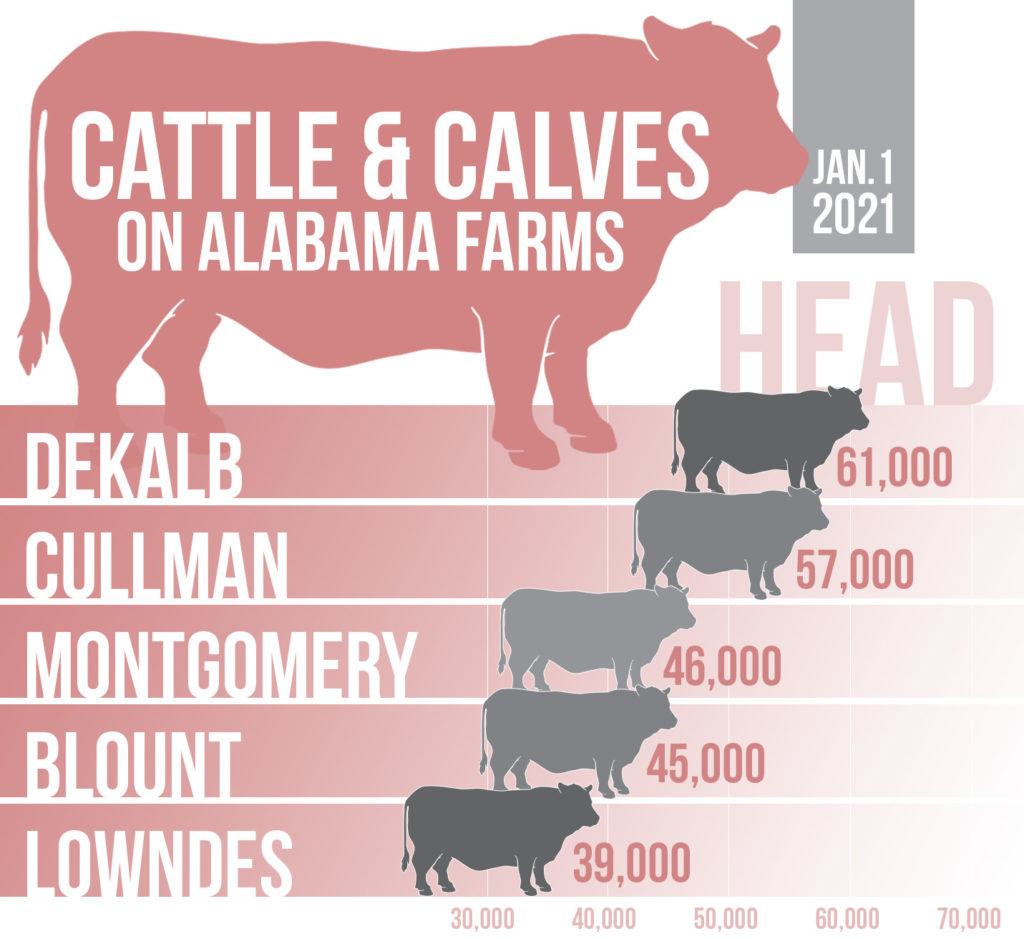Cattle Numbers In Alabama Remain Consistent

By Lakin Whatley
Alabama has 10,000 fewer cows and calves than it did in 2020, but with 1.3 million bovines in the state, the drop represents only a 1% decrease, according to a recent report by the National Agricultural Statistics Service (NASS).
The state’s Top 5 counties for cattle and calves remained unchanged since last year’s report with DeKalb, Cullman, Montgomery, Blount and Lowndes ranked respectively.
NASS reports cattle and calves are the second-largest agricultural commodity in Alabama, directly behind poultry and eggs. Alabama ranks 23rd in the U.S. for cattle production. The Top 5 states are Texas, Nebraska, Kansas, Oklahoma and California. Texas has over 12.9 million cattle and calves.
“Beef cattle production continues to be a strong anchor for Alabama agriculture,” said Alabama Farmers Federation Beef Division Director Brady Ragland. “Beef cattle represent one of the largest agricultural commodities in the state and are raised in all 67 counties. Though most concentrated cattle feeding operations have moved west, strong forage production makes Alabama a prime location for cow-calf and stocker operations.”
Beef cattle and broilers are a favorite combination for many Alabama farmers. DeKalb County produces the most cattle and calves in the state with 61,000 head and ranks first in broiler production. Cullman County ranks second with 57,000 cows and calves and is second in broiler production.
Montgomery County ranks third with 46,000 cows and calves, and Blount County is fourth with 45,000.
Lowndes County, fifth in the state for cattle inventory, has the distinction of having more cows than people. With 39,000 cattle and calves, that’s about four cows for each of its 9,726 residents.
A large percentage of Alabama cattlemen are cow-calf producers. Cow-calf producers are the first stage of beef production. The farmer manages calves on the farm until weaning weight, typically 400-600 pounds. Heifer calves can be kept for replacement cows or marketed alongside male calves before they are sold to stocker and feeder operations. After calves reach maturity, they are harvested. Most stocker and feeder operations are in the Midwest, hence the higher numbers of cattle in Midwestern states.
